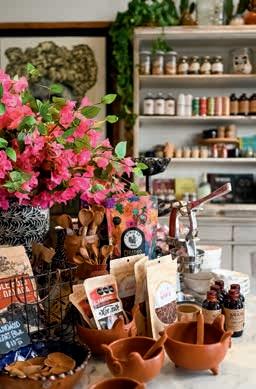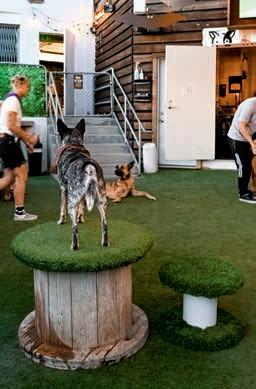

Cabrillo Tidepools
Take a look at what’s under the sea
The Cabrillo Tidepools, located within the Cabrillo National Monument and Cabrillo State Marine Reserve, offer a unique look into a dynamic ecosystem. This Rocky Intertidal Zone, where the ocean meets the land, endures significant changes in temperature, weather, and surf, which helps to explain why so many cool creatures live here.
For the best experience, plan your visit by first checking sites like www.tide-forecast.com for up-to-date tide schedules. Aim to arrive just before low tide because you’ll be able to see more tidepools and diverse marine life. While the tidepools are accessible year-round, winter months offer the most dramatic low tides. There is a fee to enter the park, though parking is free once you’re inside.
During low tide, you can see an array of marine life, including limpets, crabs, marine snails, sea stars, anemones, California sea hares, sea lettuce, moray eels, sea urchins, nudibranchs, spiny lobsters, and occasionally even octopuses! This ecosystem is delicate, so do not handle organisms or disturb their habitats. Stick to designated paths, wear sturdy shoes, and watch your step to avoid harming the environment and yourself, as the algae covering many of the rocks is slippery.
Once you’re done checking out the inhabitants of the tidepools, the high cliffs at Point Loma make it a great spot for whale watching.The volunteers stationed near the parking lot are quick to let you know what kinds of marine life you’re likely to see during your visit.
It’s important to note that Point Loma itself has an extremely rich history. It was established in 1797 as an artillery station, and it’s been used by the US military since 1852. The Cabrillo National Monument marks the landing of Juan Rodríguez Cabrillo (ca. 1497–1543) at San Diego Bay in 1542 during the first European expedition on the West Coast of what would become the United States.

Address Lands End Road, San Diego, CA 92016, +1 (619) 557-5450, www.nps.gov/cabr |
Getting there By car, take Route 5 to exit 18A to Pacific Highway. Keep left onto Barnett Avenue, and turn left onto Catalina Boulevard to the Cabrillo National Monument Fee Entry Booth. Continue on Cabrillo Road, keep left into the parking lot, and the tidepools are on the southwest corner. | Hours Daily 9am – 4:30pm | Tip Book a dinner reservation at the glamorous Marine Room during high tide, and you’ll feel like you’re under the sea as the waves crash against the restaurant’s windows (1950 Spindrift Drive, La Jolla, www.marineroom.com).
Cancer… There’s Hope
A park dedicated to survival
Sitting directly across the road from the San Diego International Airport, along the waterfront of Spanish Landing Park, is the Richard and Annette Bloch Cancer Survivors Park; a small park with a delicate water feature and pathways for passersby. At the heart of the park is the powerful sculpture Cancer… There’s Hope by Mexican sculptor Victor Salmones. This bronze piece features three figures: a man, a woman, and a child, hand-in-hand, and clearly happy. This represents the group escaping the maze that is cancer, embodying the journey of survivorship and the strength required to overcome the disease.The people entering the maze behind them depict those who have been diagnosed with cancer and their loved ones, and the journey that they are about to embark on.
Salmones, celebrated for his evocative and expressive works in bronze, captured the essence of hope and resilience in this sculpture. Unfortunately, this was Salmones’ last sculpture; he was diagnosed with cancer just two weeks after completing the work and passed away shortly after.
The park is a creation of the Richard and Annette Bloch Foundation, established by Richard Bloch, co-founder of H&R Block, and his wife Annette. After Richard’s own battle with lung cancer in 1978, and his subsequent remission, the couple dedicated their lives to supporting others facing similar battles. The foundation’s mission is to provide resources, fund research, and create helpful environments like the Cancer Survivors Parks.
San Diego’s park is part of a broader network of Richard and Annette Bloch Cancer Survivors Parks located in various cities, including Kansas City, Houston, and Indianapolis. Each park shares the common goal of supporting cancer survivors and their families, and being a place where every step you take is a tribute to the journey of cancer survivorship and the unyielding spirit of those who fight.


Address Spanish Landing, 3572-3678 North Harbor Drive, San Diego, CA 92101 |
Getting there Bus 923 to N Harbor Park Drive & Lee Court | Hours Unrestricted | Tip While at Spanish Landing Park, find California Historical Landmark No. 891 that marks the site of the Spanish Portolá expedition landing with Gaspar de Portolá and Father Junípero Serra on May 4 – 5, 1769 (just west of the Cancer Survivors Park).
Casa y Cocina
A passion for Mexican culture and craft
Right in the heart of North Park is one of creative entrepreneur Elexia de la Parra’s newest ventures: Casa y Cocina. Embarking on this journey, de la Parra has introduced a curated boutique featuring home and tabletop items that embody the essence of Mexico.
De la Parra’s original North Park gem is the beloved Artelexia, which is also a celebration of Mexican culture and traditions.With its vibrant displays and hand-sourced items, it’s a love letter to Mexico’s rich heritage and craftsmanship offering a unique blend of gifts, décor, and artisanal products.
The inspiration for Casa y Cocina stemmed from de la Parra’s travels and buying trips for Artelexia, when she encountered a myriad of items that spoke to her heart. With this shop, she aspires to encapsulate the ambiance of quaint village shops, the charm of European-style general stores, and the bustling energy of Mexican mercados. At its core, Casa y Cocina brings Mexican artisans and Latinx-owned businesses into the spotlight. Its embrace, however, is global, celebrating unique works from around the world and transporting her shoppers to places well outside their own casas and cocinas.
Traditional designs, exceptional artistry, and an array of decorative items make this a must-visit shop for those seeking the best in home and kitchen adornments. Aside from gorgeous home goods, Casa y Cocina tempts the taste buds with a selection of Mexican small-batch delicacies and gourmet food treasures both from local makers and artisans across the border.
Visit the shop and stock up on an assortment of Talavera pottery, michelada supplies (the mix, the glasses, the garnishes!), and fiesta necessities, or have a custom goodie box made within your budget to add an element of surprise. Regardless of what you’re in the mood for, there’s something beautiful and delicious waiting for you at Casa y Cocina.

Address 3030 N Park Way, San Diego, CA 92104, +1 (619) 380-2447, www.casaycocina.com, customerservice@casaycocina.com | Getting there Bus 2, 6, 7 or 10 to University Avenue & 30th Street | Hours Mon – Sat 11am – 6pm, Sun 11am – 5pm | Tip While in the neighborhood, check out a show at The Observatory, a historic live music venue that’s been around since 1929 (2891 University Avenue, www.observatorysd.com).
The Dog Society
Where pups take their people
Tucked away in San Diego’s Rolando neighborhood,The Dog Society is simply the perfect place for dog lovers and their furry friends. This spot redefines the concept of pet-friendly places, mixing canine care with good old fun in a versatile, fun space.
Extending over 8,500 square feet, The Dog Society venue was once a furniture store but has been transformed into a social hub for people and pups! For the dogs, there are both indoor and outdoor play areas where they can frolic freely and engage in social play in a secure, supervised environment. The play areas are designed to cater to all kinds of dogs, ensuring safety and fun for every breed and personality.
While the pooches enjoy their playtime, their human companions are not left behind.The Dog Society has a café and bar, where owners can unwind and socialize with a tasty menu offering: everything from light snacks, like açaí bowls and paninis, to pub favorites, like nachos and chicken wings. The beverage selection is equally varied, with coffee shop mainstays, wine, beer, cocktails, and kombucha on tap.
Of course, there’s fun for the people, too.The space features a fullsized shuffleboard court, cornhole, pool table, and televisions so you catch a game from the perfect spot. The outdoor beer garden offers guests the best of both worlds, where you can sip on a drink in the sunshine while your pups can hang out off-leash in the space. Don’t worry, you’re not the only one who can sip on a wee pint.The folks at The Dog Society also offer a trio of “dog beer”(pork, beef, or veggie), and a handful of special, pooch-friendly snacks.
In addition to their usual offerings, The Dog Society also hosts regular meetups for different breeds (think Frenchie Friday or Poodles and Doodles!) in the hopes of fostering a sense of community among dog lovers, and events, like a neon cornhole party, to keep things fun.

Address 6331 University Avenue, San Diego, CA 92115, +1 (619) 780-0235, www.dogsocietysd.com | Getting there Bus 852 to University Avenue & Rolando Boulevard or University Avenue & Bonillo Drive | Hours Mon, Thu & Fri 4 – 10pm, Wed 4 – 9pm, Sat 11am – 10pm, Sun 10am – 8pm | Tip Treat your pup or feline friend to some homemade treats and specialty goods at Dexter’s Deli (locations in San Diego, Carlsbad, and Del Mar, www.dextersdeli.com).
El Campo Santo Cemetery
Laid to rest, and buried twice
Right in the middle of Old Town, El Campo Santo Cemetery is a silent storyteller of the city’s past. It was first established in 1849 as a Roman Catholic cemetery. It served as the sacred resting place for early European settlers, Native Americans, and an assortment of well-known characters, like “Yankee Jim” Robinson, a notorious criminal from California’s rough beginnings. Between its founding and 1880, 477 bodies were buried there. In 1889, a line for horsedrawn streetcars was built through part of the cemetery, which later became San Diego Avenue.
Restoration efforts in the 1930s revitalized the cemetery in hopes of preserving its tales for future generations, and the adobe wall that surrounds the cemetery was built in 1933. Less than 10 years later, the streetcar line was paved over, leaving many graves under the road. In fact, one of the headstones within the cemetery states,“Bill Marshall is not here. But on the other side of the wall.”
Fast-forward 50 years, when ground-penetrating radar was used to locate buried bodies under San Diego Avenue.Today, small round metal discs marked “Grave Site”indicate the various locations of the concealed graves, offering a small reminder of those who lie beneath. Naturally, plenty of rumors of spiritual activity swirl around El Campo Santo. People have claimed to see apparitions and feel bursts of cold, and some have even complained of their cars not starting when parked on the paved-over portion of the cemetery. These stories have drawn thrill-seekers and ghost hunters to the area for years.
On a more historical and culturally significant note, El Campo Santo is, of course, an important part of Old Town during the pre-Hispanic tradition of Día de Los Muertos.The cemetery and surrounding area are decorated with stunning ofrendas, or offerings, and it’s where the elaborate, candlelit procession ends.

Address 2410 San Diego Avenue, San Diego, CA 92110, www.oldtownsandiego.org/ el-campo-santo-second-oldest-cemetery-in-san-diego | Getting there Bus 8, 9, 10, 28, 30, 35, 44, 83,84, 88, or 105; Coaster or Pacific Surfliner to Old Town Transit Center | Hours Unrestricted | Tip Take a stroll along the nearby Heritage Park Row to see some historic homes, like the Bushyhead House and Christian House (Old Town, www.oldtownsandiego.org).
